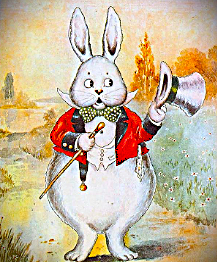The Butterfly Heart Paradox by Richard M. Ankers
- suzannecraig65
- Jul 11, 2022
- 4 min read

Butterflies defy both scientific explanation and artistic dissemination. Their tapestry wings fly in the face of our steel constructions and the natural phenomena of birds' hollow bones. A creative might paint, sculpt or describe one, but nothing they say or do prepares for that flutter at a window or alighting atop a rose. A lepidopterist may know how and why, but never with that certainty of having lifted from the ground under their own propulsion or drifted tens of miles on an unexpected breeze only to continue their nectar-sipping quests, undisturbed and unbothered. We imagine. We presume. The butterfly flits on regardless.
Humans have ever exalted butterflies for their beauty and imperial majesty. But touch one, and you risk destroying it; cage one, and it’s doomed to die. A delicate balance.
The butterfly is by default a perplexing creature, not just for the prior statements, but for their universally undeserved appeal. If ever a creature flies in the face of all it embodies, it is the butterfly. It rankles at my sensibilities even as I type the reasons why.
This creature of painted splendour, one whose whimsical flight brings such joy, whose colours lighten even the darkest hearts, has secrets. These secrets creep and crawl, hide behind leaves, blend. They are the unwanted, the deposited, the necessary shadow to their glorious later selves: caterpillars.
Yet without the caterpillar, there would be no butterfly. Without ugliness, there would be no beauty. Does the butterfly know this? Does the butterfly care?
When was the last time you saw a caterpillar and a butterfly share the same flower? When was the last time someone pointed to the little green pencil munching up their garden and whooped with delight?
The butterfly is the silk to the caterpillar’s corduroy. The butterfly is the salon to the caterpillar’s charity shop. It embodies all that is wrong with personal judgements. The flash outshines the practical. We fall for the same hoax every time.
#
I saw my first butterfly long before its creepy-crawly brethren. The Red Admiral, as my dad later instructed without even seeing it, fluttered against my curtain as though a fish trapped in a net. My bedroom window had stood open due to the paralysing heat, but the curtains, covered in a pattern of poppies, remained closed. I had waddled my way over and swept said curtain aside to release the winged creature. At least, this is what I told everyone. In actuality, I wanted to let it in and play with it. Who wouldn’t have, aged five? And yet it preferred capture over a circumnavigation of my room, choosing a slow burn over my offered protection. The sun powered on, and I marvelled at the miracle of the butterfly not already aflame. I tried again.
Here’s where things got complicated. The butterfly wouldn’t let go. No matter how much I shook the material, dragged it backwards and forwards, it clung on. The caterpillar, however, the one I hadn’t seen munching on a printed poppy, possessed no such superpowers; it flew straight into my mouth and down my throat. I cried all day.
I was in my twenties before I realised the caterpillar hadn’t died. The little creature had pupated in self-defence and attached itself to some ventricle chamber, waiting for that day when the sun would wake it.
#
I have a butterfly heart. It flaps and flutters against my ribs. My dad, now in his seventies, claims it a Painted Lady. I express my surprise at him not calling it a Red Admiral, as he always does and has. He says, “What’s a Red Admiral?” My Painted Lady slaps a beat.
My heart feels less and less beautiful. The miracle of its workings, and by extension my own, dull. The butterfly dies a little each day. I fear the caterpillar has awoken and feasts upon it.
I tell the doctor the truth and soon wish I hadn’t. He laughs as he writes. His handwriting is large and looping like a butterfly’s wings, whilst mine is compact and narrow like a caterpillar. It makes me nervous and for some unknown reason, I tell him the difference between a Painted Lady and a Red Admiral as though it has a major bearing on what he shall write next. It doesn’t. He tells me to get out.
My fluctuations worsen, as does the pain. The day I take my dad his coffee to find him slumped over the edge of the bed, it explodes.
The funeral is awful. As the vicar talks up my dad’s life, I see butterflies in the stained-glass windows and caterpillars for pews. Every curlicued stone adornment is a curled butterfly tongue waiting to taste God. The altar is a caterpillar stood on its rear legs looking out across the church for the devil. I clasp my heart and fall.
#
When I was a boy, I swallowed a caterpillar. Now, I am a man, laid in a bed of white sheets held so tight about me as to constrict. The doctor says she thinks I’m pupating. How can I tell her I’m a butterfly in reverse?
The hoax has taken me. The absurdity of it all dazzles my brain.
“Perhaps you were never a butterfly? Perhaps that caterpillar was a moth?
My father stands beside me, his hand outstretched. There is a stunning garden behind him full of pooling, golden light.
“How can I be a moth?” I ask. “They hate the light.”
He shrugs as the gold turns black.








Comments